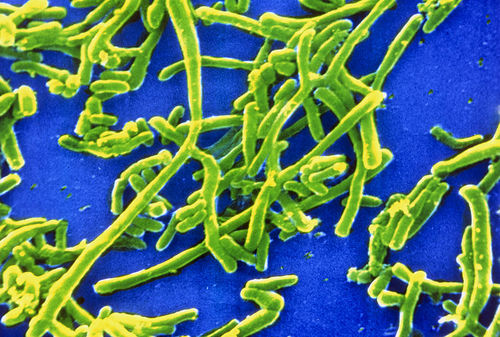
Diphtheria
Overview
Diphtheria is an illness caused by a toxin produced by some strains of bacteria called Corynebacterium diphtheriae (C. diphtheriae). The toxin can kill healthy tissue and cause serious health problems. There are two types of diphtheria. Respiratory diphtheria cause infection of the upper respiratory tract. Cutaneous diphtheria causes infection of the skin.
There are three combination vaccines that protect against diphtheria: DTaP, Tdap, and Td. The other components of the vaccines are pertussis (whooping cough) and tetanus.
Spread (transmission)
Diphtheria spreads through respiratory droplets—coughing and sneezing. It also can spread through touching an open ulcer or sore that is caused by C. diphtheriae.
Symptoms
It takes around 2–5 days for symptoms to appear after being exposed to diphtheria. Some people will have no symptoms.
Symptoms of respiratory diphtheria:
- Mild fever
- Swollen glands in the neck
- Weakness
- Sore throat
- A thick, gray membrane covering the throat and tonsils
Symptoms of cutaneous diphtheria:
- Open sore with clear edge
- Pain
- Rash with scales or peeling skin
- Redness
- Swelling
Treatment
Treatment for respiratory diphtheria involves antitoxin to stop the toxin from causing more damage to the tissue and antibiotics.
Cutaneous infection is treated with antibiotics.
People in close contact with someone who has diphtheria should receive antibiotics to keep them from getting sick.
Complications
The most common deadly complication from respiratory diphtheria is suffocation from airway blockage. If the toxin gets into the bloodstream, it can kill the tissue of other organs and cause kidney failure, myocarditis (heart damage), and nerve damage.
Even with treatment, about 1 in 10 people with respiratory diphtheria will die. Without treatment, up to half of people will die from the disease.
Cutaneous diphtheria can be very slow-healing. The skin infections can result in complications, severe disease, and death; however, this is rare.
Vaccines
There are three combination vaccines that protect against diphtheria: DTaP, Tdap, and Td. The other components of the vaccines are pertussis (whooping cough) and tetanus. The vaccines work well but protection decreases over time. People who are fully vaccinated will need to get boosters every 10 years.
See vaccine recommendations for diphtheria:
Myths/strange things
Myth: Diphtheria is not considered a deadly disease anymore. Fact: About one out of every ten people who get diphtheria dies from it.
Myth: Diphtheria is just an infection of the throat, no worse than strep throat. Fact: Diphtheria can lead to breathing problems, heart failure, paralysis, and sometimes death.
Recommended read! Smithsonian Magazine: How Science Conquered Diphtheria, the Plague Among Children
Resources
- CDC: Diphtheria main page
- WHO: Diphtheria
- CDC: Diphtheria Vaccination
- CDC: Types of Diphtheria Vaccines
